5 Ways to Keep Leather Boots From Creasing
I don’t care for leather creases on my boots. I know they’re a sign of well-worn pair of boots, but with a nice pair of calfskin dress boots, I just want a perfectly smooth, uniform boot.
How do you stop leather boots from creasing?
I went to Virginia to ask Steve Doudaklian, the award-winning cobbler at Bedo’s Leather Works for advice, who had some dispiriting news:
All leather shoes will crease. You can’t stop them from creasing. If you wear them, they will crease.
(They should rename their shop Bummer Leather Works.) But he also told me we can minimize creasing.
So we’re going to go over why your leather shoes and boots will inevitably crease, what you can do to minimize it from happening, and how you can temporarily remove creases from your leather shoes or boots.
What Causes Leather Shoes To Crease?
Just by wearing boots — you know, bending them — leather creases. There’s no way to 100% guarantee it will never crease.
Leather creases for a few reasons: your foot bends the leather, and leather has a sort of ‘memory.’ Once the fibers crease, they will generally stay that way. Some leather is more prone to creasing than other types of leather (we’ll get to that later) but for now, what makes leather crease?

Walking
When you walk, your feet bend at the toes and the ankles. Your ankles and feet roll inward or outward. All of this movement happens with every step you take.
This is good. If your boots were so stiff that they didn’t bend, they would be super uncomfortable. Over time, this motion is going to bend the leather, causing it to roll or crease. Some guys like this and see it as just part of the aging process of leather shoes and boots.
“Leather has a memory where it doesn’t matter how much you try to get rid of the creases, as soon as it starts flexing, it’s going to come back.” says Steve.
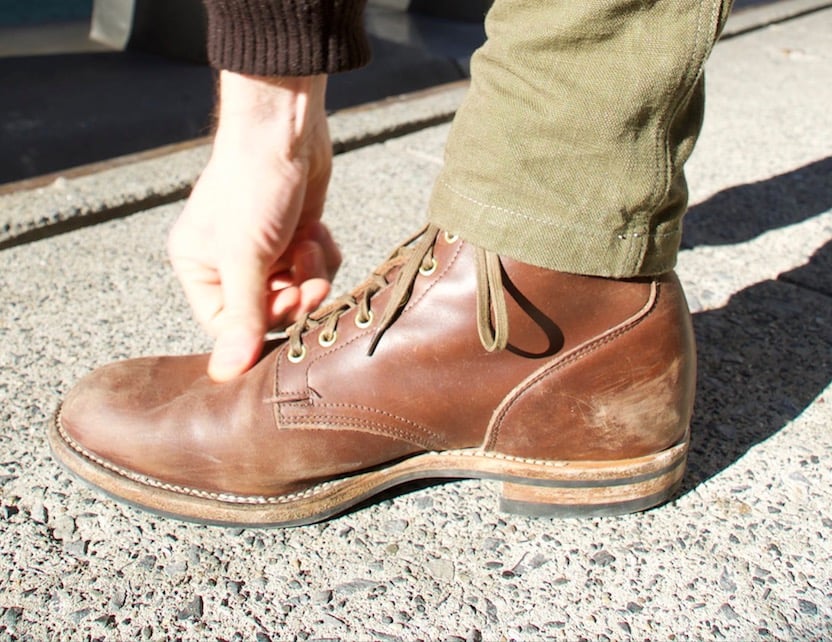
Fit
Shoes that don’t fit correctly also cause creasing. All the extra material that normally hugs the foot is now caving in, pushing against itself, and losing its shape.
[Read More: The Ultimate Guide to How Boots Should Fit]
Water
Leather shoe creasing can be caused by leather getting too wet and not drying properly. This is another reason to always use shoe trees. (More on that later.)
Style & Design
Some styles and builds crease more than others. Wholecut leather boots and shoes are likely to crease more than boots made with multiple pieces of leather. This is especially true for boot with a toe cap. The stitching works as a natural breakpoint because the leather has been cut and perforated, making it more pliable than the thick pieces.
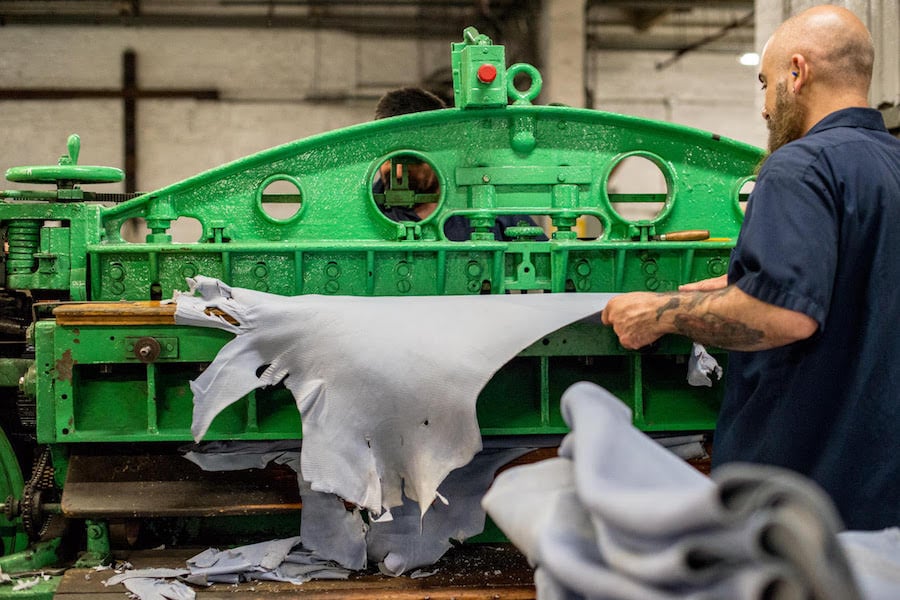
The Clicking
The section of the hide that’s selected for the different part of your boots — a process called “clicking” — could also be a factor.
“Toward the middle and toward the back, toward the butt area, the fibers a lot tighter and less prone to creasing,” says Steve. “But at the belly and toward the neck area you’ll have a lot more creases there. (And) manufactures will use every part of the hide to make their products.”
[Related: The 9 Best Leathers for Boots]
How To Prevent Leather Creasing Excessively
Steve provided 5 ways we can slow down, or minimize the amount of creasing that happens with our leather shoes and boots.
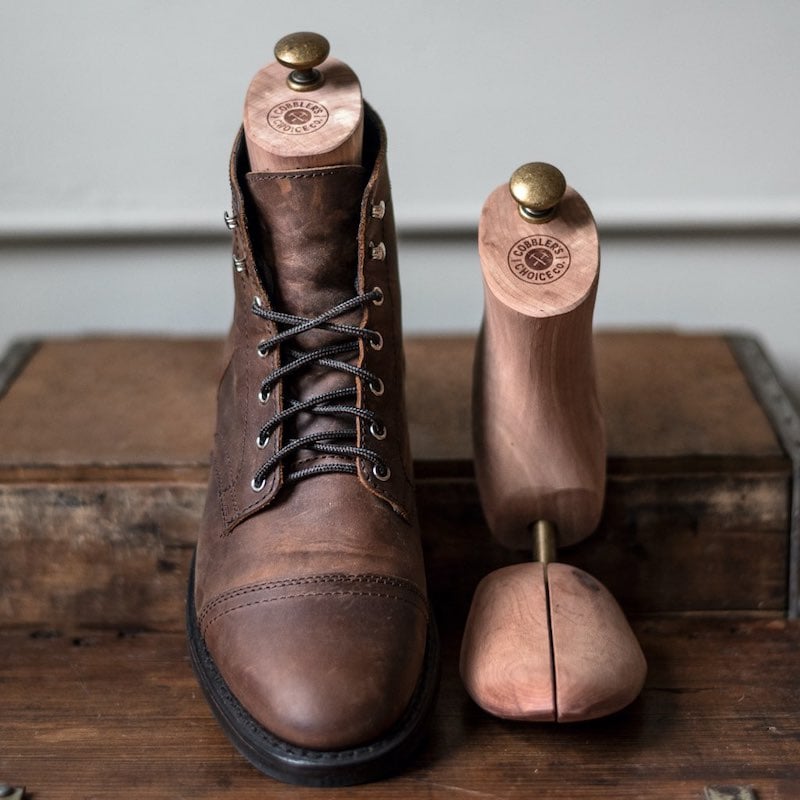
1. Use shoe trees
Shoe trees are super useful; I always recommend them to guys when they buy their first pair of nice boots. “Our feet perspire, it gets warm inside, so after you take them off you insert the shoe trees in,” says Steve. “With this cedar smell, it will absorb some of that moisture, keep it fresh, and keep some of those creases from happening right at the flex joint.”
What Exactly is a Shoe Tree?
A shoe tree is a foot-shaped piece of plastic, wood, or metal that you stick inside of your boot. They range from $10 for an inexpensive pair of plastic shoe tree to $25 for an inexpensive cedar shoe tree. Bigger brands will charge up to a hundred dollars for a pair.
Types of Shoe Trees
You have a few options here. Plastic and metal are the cheapest, but you lose a lot of functionality. They will all work for limiting creasing.
[Learn More: 3 Reasons You Need Cedar Shoe Trees]
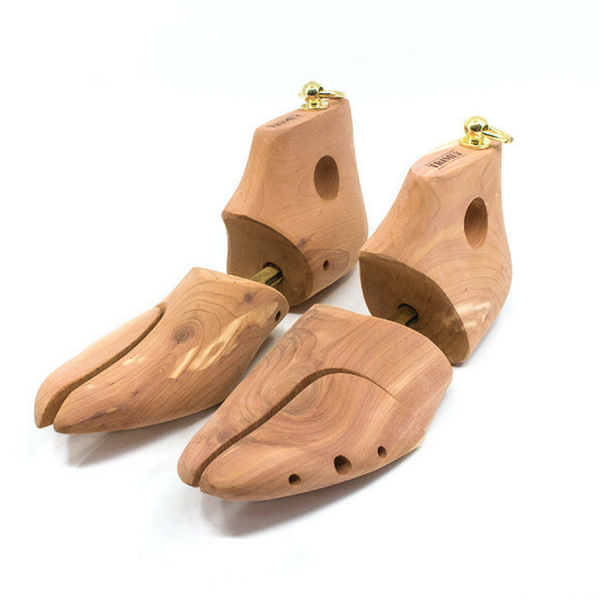
[BUY 1 PAIR OF CEDAR SHOE TREES]
Benefits of Cedar Shoe Trees
If you use shoe trees, they’re going to minimize the crease at the flex joint, but you’re still going to have a bit of creasing. But there are other benefits of shoe trees.
It’s Antimicrobial
Cedar has a lovely pine smell that’s way better than stinky boots. Because it’s antimicrobial, it helps to reduce bacteria and stink inside the boots.
It’s Durable
Cedar is much less likely to rot and warp than other woods.
It’s Moisture Repellent
Cedar is known for its resilience and water resistance. After a day of sweating and funking up the inside of your boots, cedar helps to soak up that moisture — and that funk. This also helps prevent creasing caused by wet boots.
Insect Repellent Properties
Stinky boots made from animal hides and cork may attract insects like cockroaches and cloth-eating moths. Cedar wood contains oils that repel insects.
There are plastic and metal shoes trees out there, but cedar is the best.
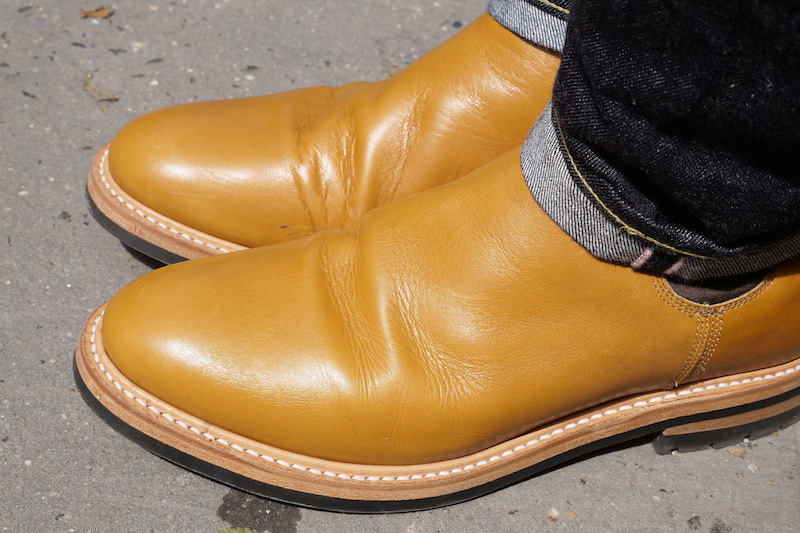
2. Get the right size
I wrote an entire article about sizing your boots. Not all of it relevant to creasing but a few points are relevant as to why sizing right is an important factor.
The Flex Point
All boots have a flex point (it’s where the toes bend) and you want the boot to flex right there, where your foot does at the toe line. If your toes are flexing too far back in the boot your, the boot will flex in more places, causing more creasing.
The Width and Volume
If your boots are too wide or too spacious, then you’ll have a lot of creasing on the sides. Guys with narrow feet or low volume feet notice this a lot: the extra space between the uppers and your feet will allow the leather to bend and crease when you walk and stand.
[Make Sure Get The Best Fit: The Ultimate Guide to How Boots Should Fit]
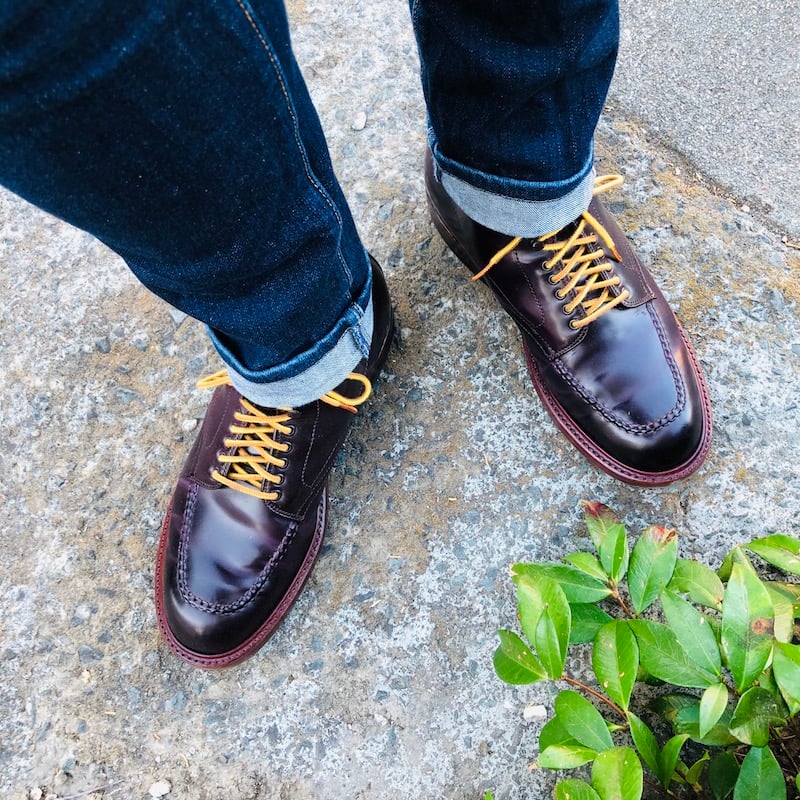
3. Get cordovan (if you can)
Shell Cordovan is famously shiny, classy, and crease resistant leather. Made only from a small membrane at the base of a horse’s tail, it has unusual properties that keep it smooth and glossy for far longer than other leathers.
“There are no wrinkles on shell cordovan,” says Steve. “They’re called rolls, you’re not going to have any wrinkles on it.”
Its self polishing and it ages beautifully — there are are a lot of examples of people finding 20-, 30-, 40-year-old shell cordovan shoes and boots and bringing them back to life.
The downside is that shell is prohibitively expensive for the average consumer — typically well over $700 for a pair.
[Learn More: The 7 Best Shell Cordovan Boots On the Market]
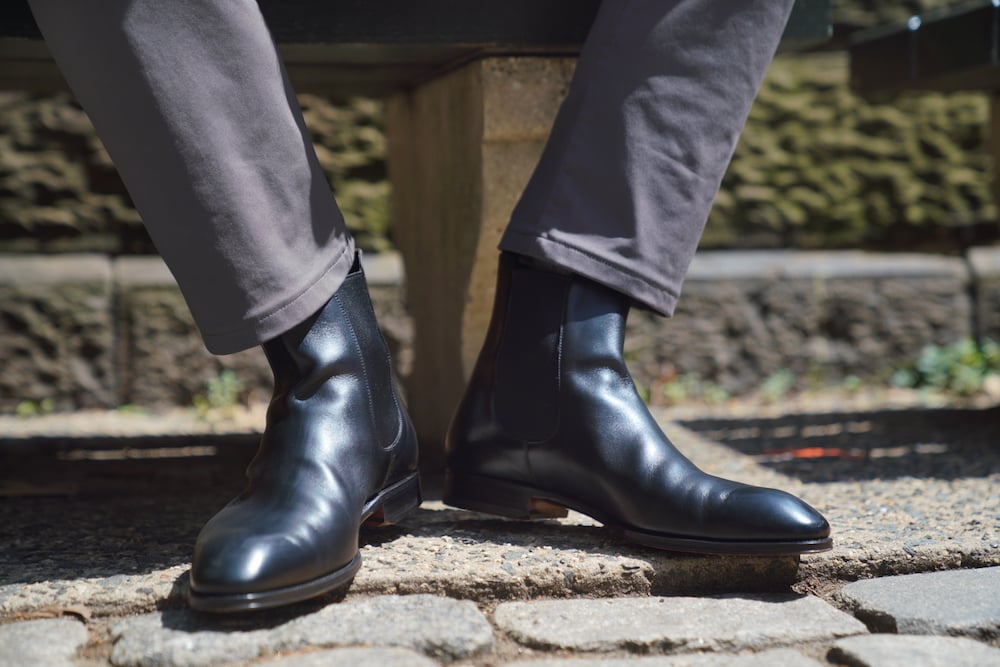
4. Get more expensive boots
Maybe not necessarily expensive, but boots that cost enough that skilled shoemakers have been employed to check that there’s minimal crease-causing grain breakage , which is less likely with expensive boots.
“On the belly and the neck of the hide where the hide is stretched, you’re going to see more of those wrinkles there,” says Steve. “Unfortunately when the manufactures makes the shoes or boots, it’s not so obvious. But when you start wearing it, it’s going to start showing more.”
Using that kind of leather is very common because when the manufactures are making shoes and boots, they are going to use almost every part of the leather. (Hey, that’s more ethical, right?)
[Viberg Service Boot Review – Is It Seriously Worth $700?]
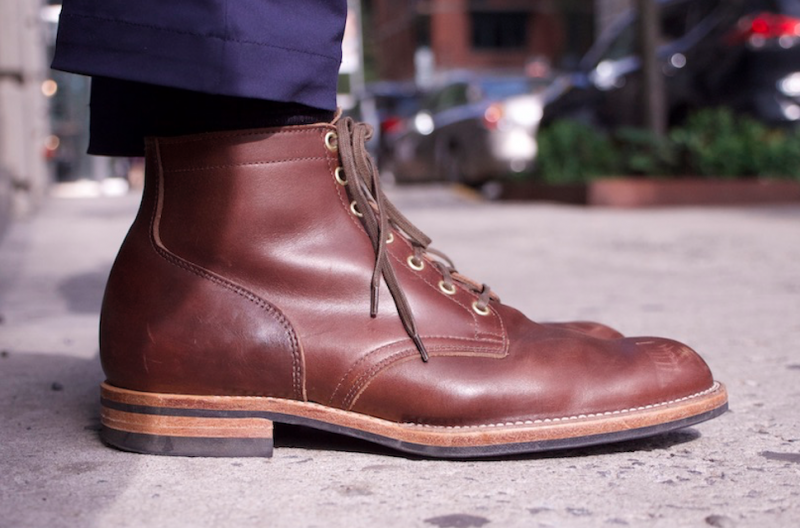
[GET THE BEST PRICE ON THE VIBERG SERVICE BOOT HERE!]
Pricier boot companies, though, are so good at sorting their leather and discarding imperfect hides that they’ll often discard a lot of leather to get that perfect pair. For example, Chromexcel is incredibly popular leather that creases easily, but I found that among my many Chromexcel boots, my $700 Viberg have creased the least.
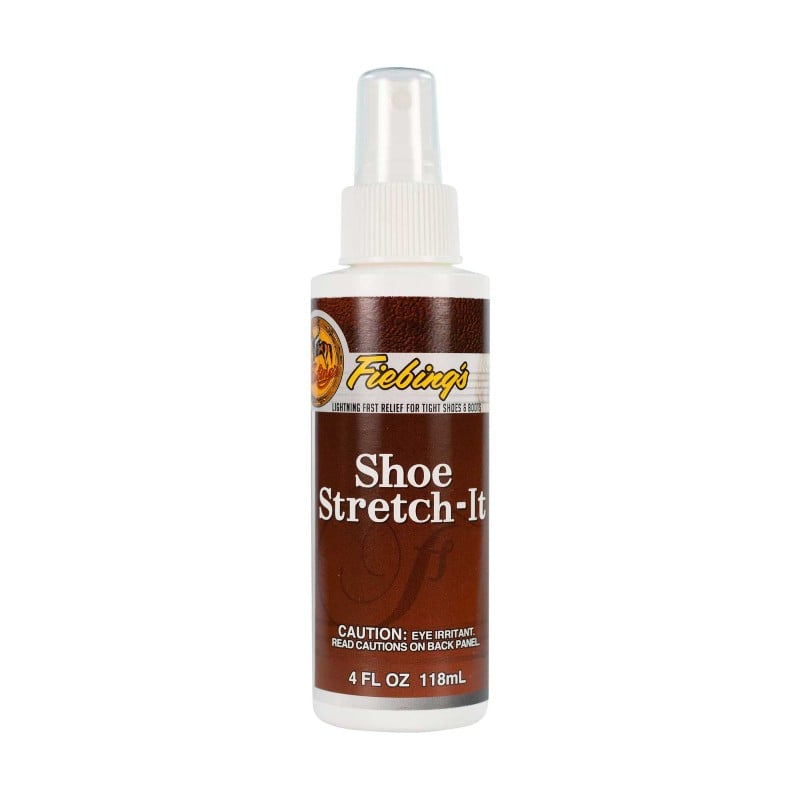
5. Rubbing The Crease With Alcohol
“Make a 50 percent rubbing alcohol and 50 percent water mixture, spray them down, and gently massage them the opposite way of creases,” says Steve. “If the creases are horizontal, I’ll come in vertical.”
You might have heard people say that alcohol will suck the dye out of the leather and dry it out.
“Not necessarily,” says Steve. “This is not that potent of abrasion that it’s going to affect the dye. Plus, it’s diluted with water, so it’s not that harmful to dyes.”
I’ve read a lot of different opinions about this, but if Steve is comfortable doing this for his clients, I feel pretty good about it.
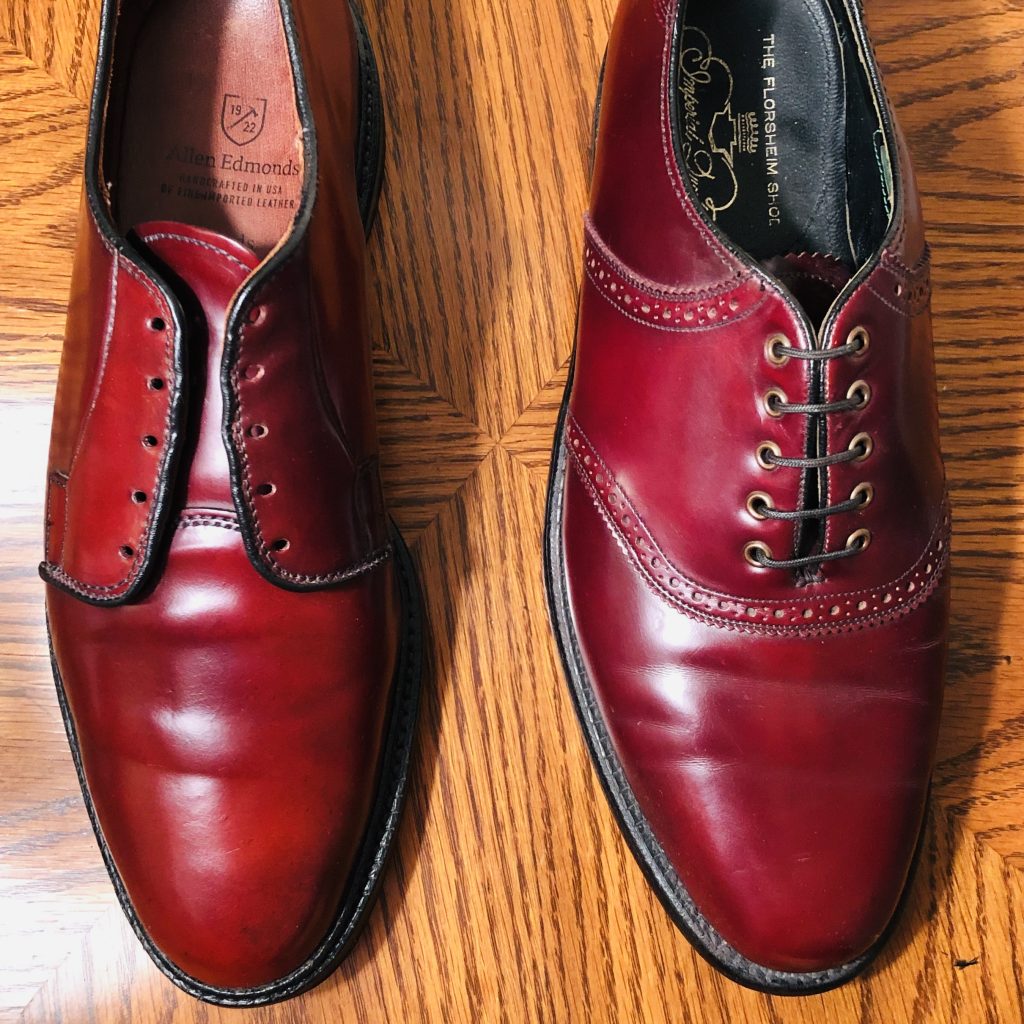
How to Remove Creases with Rubbing Alcohol and Water
First, you mix water and alcohol to a 50/50 ratio. (If it’s suede, spray the entire shoe to prevent stain from uneven drying.) Take your finger and rub the opposite direction of the crease. (So if it’s a horizontal crease, rub vertically.)
Afterward, put them on a cedar shoe tree to dry overnight. You can apply a bit of leather conditioner, but it’s only necessary if the leather looks dry; it shouldn’t just from a bit of water an alcohol.
[Related: The Best Boot Conditioners On the Market]
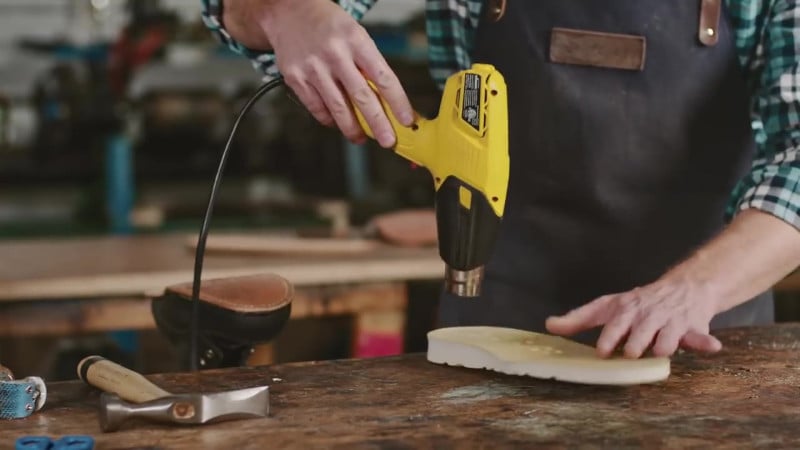
6. Heating Your Boots with an Iron, Blow Dryer or Heat Gun
I’ve heard of people ironing the leather with an iron and never knew if it was a good idea.
“Some people do that, but it’s not really just putting the iron straight on the shoes,”Steve explained. “They’ll wet the uppers, they’ll wrap it with a moist towel, and they will put heat on it. The heat’s going to loosen the grains a little bit.”
I don’t recommend this for the average person. Done right, it won’t shrink the leather, but it will if you apply too much heat. You’ve got to be really careful, you can’t just turn the iron on an iron on your shoes, it doesn’t work that way.
This is the same for blow dryers or heat guns. If you know what you’re doing, go for it. But if you’re just Googling this and trying it out for the first time, don’t do it on your nice boots. Maybe practice on some shoes from a thrift shop.
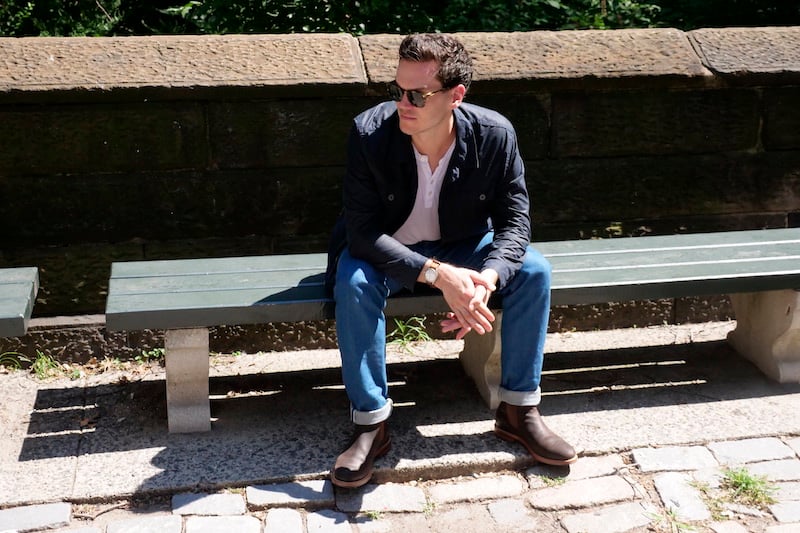
Wrapping Up
“Everything you do to remove wrinkles is temporary,” Steve emphasizes. “When you’re wearing them, they are going to come back. So, this advice will reduce the time to get wrinkles, but it will happen, especially if you wear your boots. And that’s why we bought them, right?”
The big take away? Get a shoe tree. Get boots and shoes that fit well. Take care of them, and they will take care of you.

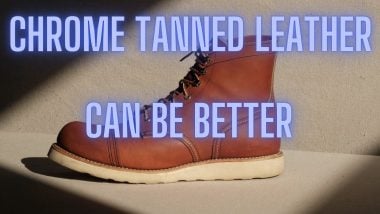
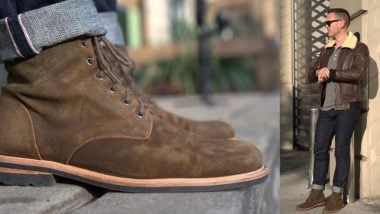
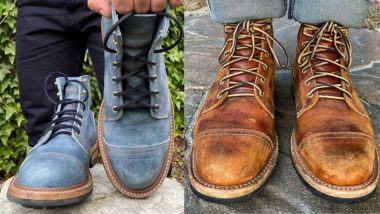
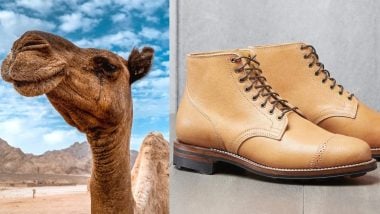

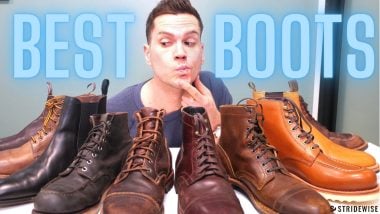

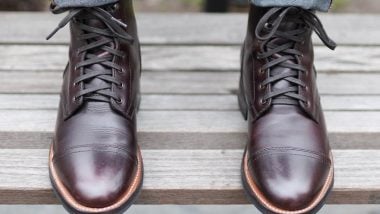
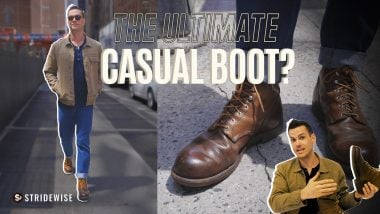
Join the Discussion